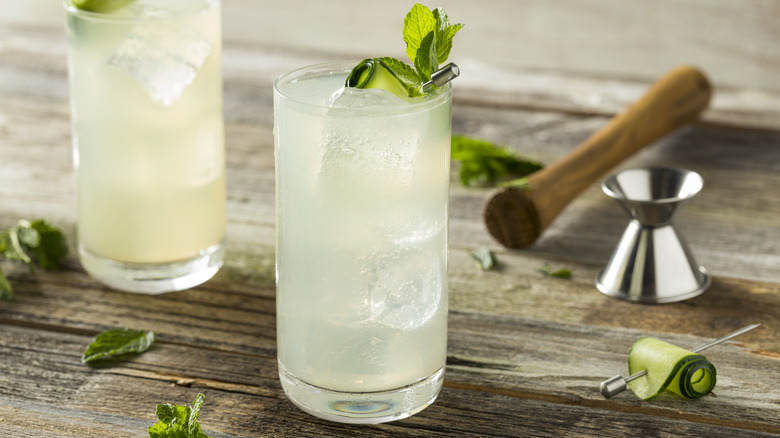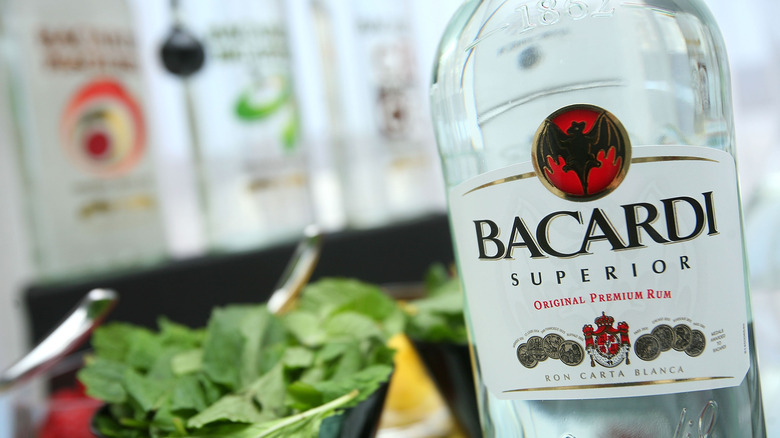The Historic Connection Between The Daisy De Santiago Cocktail And Bacardi
When Prohibition hit the U.S. in 1920, cocktail lovers flocked en masse to Havana, where Bacardi quickly emerged as the preferred liquor brand of the fashionable bon vivant crowd. More specifically, the "spirited" new age sippers were jetting to Bacardi headquarters, where artists, writers, and celebrities were known to fill the black and gold lobby around the clock. One such writer was Charles H. Baker Jr., an American bevy buff with a boundless budget from a new marriage who found himself taken with one of the Bacardi HQ's chief offerings, the Daisy de Santiago cocktail.
The drink's name is an homage to Bacardi's flagship distillery in Santiago, Cuba, and the cocktail is thought to have originally been invented by a bartender at the Bacardi headquarters in Havana. Its exact birthdate is lost to history, but the drink's first appearance in writing is in Baker's 1939 book "The Gentleman's Companion volume II — An Exotic Drinking Book." Per his log, Baker visited the bar four times during his stay in Cuba, and he calls the Daisy de Santiago "a lovely thing" and "along with the immortal Daiquiri, this is the best Bacardi drink on record," via Difford's Guide.
Along with the Daisy de Santiago, other Prohibition cocktail classics enjoyed at HQ included the Mismo and Mary Pickford. Bacardi has since moved its operation to Bermuda in 1965 following the Cuban Revolution of the 1950s.
Daisy de Santiago got the Prohibition party started in Havana
The Daisy de Santiago is a fizzy, refreshing combination of white rum, lime juice, simple syrup, yellow Chartreuse, club soda, and mint garnish. The ingredients (except for the club soda) get wet-shaken and strained into a crushed ice-filled goblet or stemmed wine glass. To finish, the drink is topped with club soda and mint. You could also load it with other garnishes like berries, icing sugar, or a dehydrated lime wheel. Alternative assemblies call for the yellow Chartreuse to be omitted from the shaker and drizzled over the top of the finished cocktail instead. Others swap the Bacardi Superior white rum for one- to three-year lightly aged rum like Bacardi Gran Reserva Maestro de Ron, which lends to a deeper flavor profile.
Fans might be more widely familiar with its frozen strawberry-flavored cousin served in a bowl-sized glass with a campy cactus-shaped stem. But, a traditional daiquiri simply mixes light rum, lime juice, simple syrup, and a lime twist. Compared to the daiquiri, the Daisy de Santiago features a more herbaceous profile with subtle aromatics from the yellow Chartreuse – which, in many ways, actually seems more comparable to the lime, mint, and rum Mojito.
The "Daisy" cocktail family, which also includes margaritas and sidecars, combines a base spirit with citrus juice, simple syrup, and often a fizzy mixer like club soda and a flavored liqueur. Either way, the result is a light, accessible sipper (and, fittingly, the word for "daisy" in Spanish is "margarita").

